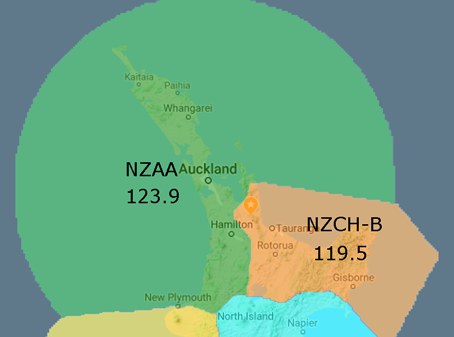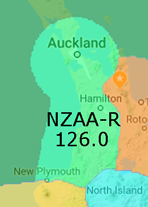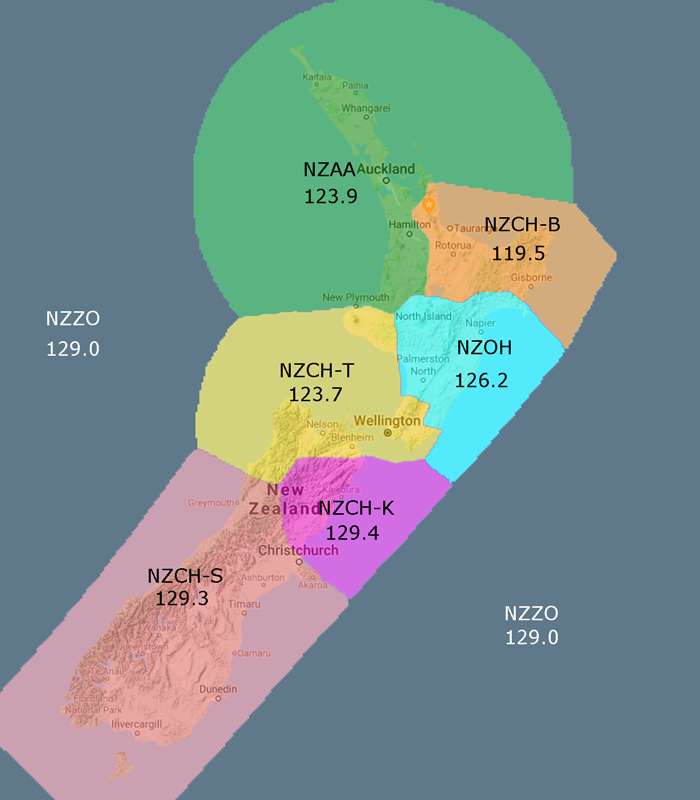VATNZ Airspace Changes - October 14 2019
The launch of the Audio for VATSIM platform is introducing a number of operational changes to the way ATC Services are provided on the VATSIM network. VATNZ has chosen to take advantage of this period of change to implement a series of revisions to our airspace and our ATC positions.
These changes come into effect at 9am on Monday October 14 2019 NZDT, and supercede any configuration management or documentation issued prior to that date.
Airspace Changes
Auckland Control
 The airspace in the upper North Island has been re-configured to bring it more into line with the current real-world operations.
The airspace in the upper North Island has been re-configured to bring it more into line with the current real-world operations.
Chief among these changes is the replacement of Raglan Sector (NZCH-R_CTR/126.000) with the Auckland Control (NZAA_CTR/123.900) position.
The airspace that was formerly known as Raglan is now Auckland Control and is now operated on the 123.900 frequency.
The Auckland Control airspace has one sub-sector: Raglan Sector detailed below. It also has delegated responsibility for Bay Sector covering the Waikato, Bay of Plenty, and East Cape.
When either of these positions are not online, Auckland Control is responsible for their airspace.
Raglan Sector
 Raglan Sector's airspace now consists solely of the 126.000 airspace along the west coast of the North Island extending from Taranaki to just north of Raglan.
Raglan Sector's airspace now consists solely of the 126.000 airspace along the west coast of the North Island extending from Taranaki to just north of Raglan.
Its chief real-world role is to manage the descent of northbound aircraft into Auckland, and is operated out of Auckland.
The Raglan Sector position has had its callsign changed to NZAA-R_CTR to reflect that it is a subsector of Auckland Control and is controlled from Auckland.
In the VATSIM world, there is almost never enough traffic to warrant operating this single sub-sector.
Important:
Therefore Raglan Sector has been declared an Events Only position, and may only be staffed with prior permission of the VATNZ Board during major events.
Airspace Summary
The new Enroute airspace is depicted in the diagram below.
Reminder: Raglan Sector (NZAA-R_CTR) is now an Events Only position, and may only be staffed with prior permission of the VATNZ Board during major events. At all other times, this subsector is part of the NZAA_CTR sector and pilots and controllers active in this airspace should all use 123.900.

Frequency Changes
Ohakea Control Frequency Change
Ohakea Control provides enroute services for the East Coast and Central North Island, from Hawke's Bay to the Wairarapa in the East, and covering the Ruapehu and Manawatu districts in the west. When it is not online, Ohakea's airspace is managed by Taranaki Sector.
Ohakea Control remains operationally unchanged, however it is now shifted to 126.200 to bring it more into line with the real-world frequency use.
Auckland Radio Frequency Change
In order to avoid interfering with a frequency in one of our neighbouring divisions, the VHF Alias frequency for Auckland Radio (NZZO_FSS) is now 129.000.
Frequency Summaries
Enroute Frequencies
Each Enroute (CTR) position has a single unique primary VHF frequency. When communicating with enroute controllers, aircraft should use the frequency associated with the sector they are currently located in.
Important:
Each primary frequency is configured to have almost complete coverage down to sea-level everywhere within the enroute sector to which it is assigned.
However, unlike the previous Voice Room-based system, on the Audio for VATSIM platform each frequency has a finite range and you will not, for example, be able to communicate with pilots in the South Island on the Auckland Control frequency.
Enroute controllers who are extending coverage should activate and cross-couple the primary frequency for each of the enroute sectors into which they are extending.
As aircraft move from one enroute sector to another, the controllers should transfer the pilots onto the primary frequency for the sector that they are entering to ensure that they remain in communications range.
More information on correct Voice Operations and Extended Coverage procedure is available in the Standard Operating Procedures section.
Full details on all VATNZ ATC Positions are available via the Airspace Search widget at the top of each page on the website, and at the Airspace Positions page.
| Callsign | Radio Name | Frequency | Type | Notes |
|---|---|---|---|---|
| NZAA_CTR | Auckland Control | 123.900 | Primary | Auckland Sector |
| NZAA-R_CTR | Auckland Control | 126.000 | Event Only | Raglan Sector |
| NZCH-B_CTR | Christchurch Control | 119.500 | Primary | Bay Sector Managed by NZAA_CTR when Offline |
| NZCH-T_CTR | Christchurch Control | 123.700 | Primary | Taranaki Sector |
| NZOH_CTR | Ohakea Control | 126.200 | Primary | Ohakea Sector Managed by Taranaki when Offlne |
| NZCH-K_CTR | Christchurch Control | 129.400 | Primary | Kaikoura Sector |
| NZCH-S_CTR | Christchurch Control | 129.300 | Primary | South Sector |
Oceanic Position HF Frequencies
The Audio for VATSIM platform simulates Oceanic Radio services via HF radio transmission. As a result, each Oceanic position now has a primary HF frequency.
Note: currently most simulators do not support the tuning of HF radios and so for now most pilots will connect to Oceanic radio by tuning the station's VHF alias (the COM1/2 frequencies you currently use to tune them). If the pilot tunes a frequency matching a station's VHF alias and a controller with matching callsign and VHF frequency is online and in visibility range of the aircraft, then the voice client will tune the HF frequency associated with the station. This will allow pilots and ATC to communicate over HF radio for a range of up to 4000nm.
| Callsign | Position | HF Frequency (KHz) | VHF Alias Frequency (MHz) |
|---|---|---|---|
| NZZO_FSS | Auckland Radio | 8867 | 129.000 |
| NZCM_FSS | McMurdo Radio | 9032 | 128.700 |
| NTTT_FSS | Tahiti Radio | 9116 | 125.500 |

